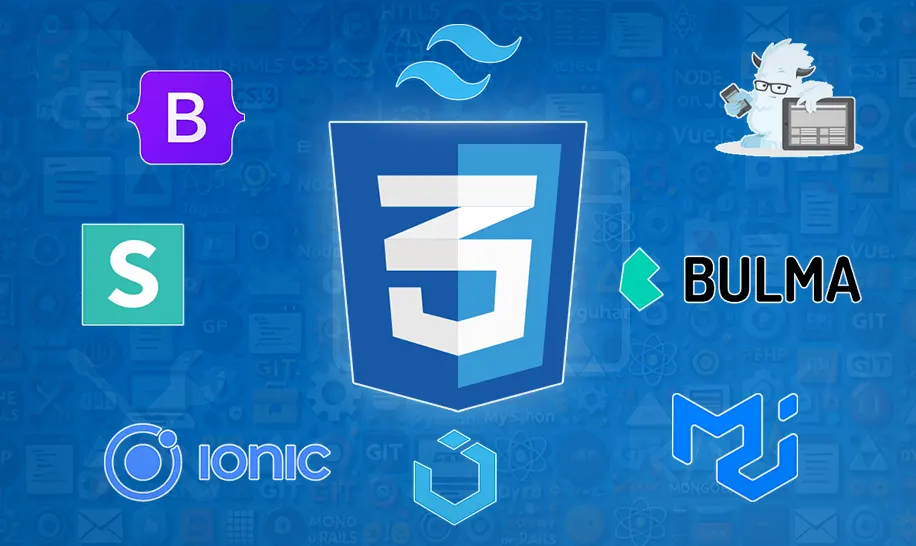
Crafting the Perfect Website: Custom CSS or CSS Frameworks?
In the dynamic world of web development, the visual appeal and user experience of a website are paramount. At the heart of this lies CSS (Cascading Style Sheets), the language that dictates how your HTML content looks. When setting out to style a website, developers often face a fundamental choice: to write every line of CSS themselves (Custom CSS) or to leverage pre-written collections of CSS rules (CSS Frameworks). Both approaches have their merits and drawbacks, and understanding them is key to making the right decision for your project.
What are CSS Frameworks?
A CSS framework is a pre-written library of CSS, and sometimes JavaScript, that provides a foundation for styling your website. Think of it as a toolkit filled with ready-to-use components, layouts, and utility classes. Instead of building common elements like buttons, navigation bars, grids, and forms from scratch, you can simply apply the framework's predefined classes to your HTML. This significantly accelerates the development process and helps maintain consistency across your project.
Key Components of a CSS Framework:
- Grid Systems: Most frameworks offer a responsive grid system, typically based on a 12-column structure, to help you create adaptable layouts for various screen sizes.
- Predefined Styles: They come with pre-styled elements for common UI components such as buttons, forms, typography, alerts, modals, and more.
- Responsive Design Features: Frameworks often employ a mobile-first approach, using media queries to ensure your website looks good on all devices, from desktops to smartphones.
- Utility Classes: Some frameworks provide atomic or utility classes that allow you to apply specific styles directly in your HTML (e.g.,
text-center,p-4,bg-blue-500). - JavaScript Components: Many frameworks include optional JavaScript components for interactive elements like carousels, dropdowns, and accordions, saving you the hassle of writing custom scripts.
Best CSS Frameworks for Modern Web Development:
- Bootstrap: Arguably the most popular CSS framework, Bootstrap is a comprehensive, open-source toolkit for developing responsive, mobile-first projects on the web. It offers a vast collection of pre-designed components, JavaScript plugins, and a powerful grid system. Its extensive documentation and large community support make it an excellent choice for beginners and large-scale projects alike.
- Tailwind CSS: A "utility-first" CSS framework, Tailwind CSS takes a different approach. Instead of providing pre-styled components, it offers low-level utility classes that let you build custom designs directly in your HTML. This gives developers immense control and flexibility, allowing for highly unique designs without the bloat of unused styles. It's particularly favored by developers who prefer to compose their UI from small, single-purpose classes.
- Bulma: Built on Flexbox, Bulma is a modern, lightweight, and modular CSS framework. It's known for its simplicity and ease of use, with no JavaScript dependencies required. Bulma's intuitive class naming and clear documentation make it a good option for those seeking a straightforward and flexible framework, especially for projects where JavaScript is handled separately.
When to Use CSS Frameworks:
CSS frameworks are a fantastic choice in several scenarios:
- Rapid Prototyping and Development: When you need to get a project up and running quickly, frameworks provide pre-built components and layouts, saving significant development time.
- Ensuring Consistency: For larger projects or teams, frameworks enforce a consistent design language and coding style, making it easier for multiple developers to collaborate and maintain the codebase.
- Responsive Design: Frameworks excel at handling responsive design, often with a mobile-first approach, ensuring your website adapts seamlessly to various screen sizes with minimal effort.
- Standardized UI: If your project requires a standard, modern user interface without highly unique design elements, a framework can deliver a polished look efficiently.
- Beginner-Friendly: For developers new to CSS or front-end development, frameworks offer a guided approach and reduce the learning curve, allowing them to build attractive websites faster.
When Custom CSS is Better:
While frameworks offer efficiency, there are situations where custom CSS is the superior choice:
- Highly Unique Designs: If your website demands a completely bespoke, pixel-perfect design that doesn't fit within the conventions of existing frameworks, custom CSS provides the ultimate control.
- Performance Optimization: Frameworks, by nature, include a lot of code, much of which might go unused in a specific project. Custom CSS allows you to write only the styles you need, leading to leaner stylesheets and faster page load times, which is crucial for SEO and user experience.
- Learning and Deep Understanding: For developers who want to truly master CSS and understand the underlying mechanics of web styling, writing custom CSS from scratch is invaluable for learning.
- Avoiding "Framework Look": Websites built with frameworks can sometimes have a generic or "template" feel. Custom CSS allows you to create a distinct brand identity.
- Minimalist Projects: For very small, simple websites with limited styling needs, a framework might be overkill, adding unnecessary complexity and file size.
- Legacy Systems or Specific Integrations: When integrating with existing systems or platforms that have unique styling requirements, custom CSS provides the flexibility needed to match those environments.
Pros and Cons of Custom CSS:
Pros of Custom CSS:
- Complete Control and Flexibility: You have absolute control over every pixel and design detail, allowing for truly unique and tailor-made aesthetics.
- Optimized Performance: By writing only the necessary code, you can achieve smaller file sizes and faster loading times, improving user experience and SEO.
- No Unused Code (Bloat): You avoid including large amounts of CSS that your project doesn't use, which often happens with frameworks.
- Deeper Understanding: It fosters a deeper understanding of CSS properties, selectors, and the cascade, leading to stronger development skills.
- Unique Brand Identity: Your website will stand out and perfectly reflect your brand's unique visual language.
Cons of Custom CSS:
- Time-Consuming: Building everything from scratch is significantly more time-consuming, especially for complex designs or large projects.
- Higher Learning Curve: Requires a solid understanding of CSS, responsive design principles, and potentially CSS preprocessors (Sass/Less) for efficient organization.
- Potential for Inconsistency: Without a strict framework, maintaining design consistency across a large website or a team can be challenging if not properly managed.
- Cross-Browser Compatibility: You are solely responsible for ensuring your styles work consistently across different browsers and devices, which can be a debugging nightmare.
- Maintenance Overhead: As projects grow, managing and refactoring a large custom CSS codebase can become complex if not well-organized.
Pros and Cons of CSS Frameworks:
Pros of CSS Frameworks:
- Speed and Efficiency: Rapid development is a major advantage, allowing you to build layouts and components much faster.
- Consistency: Frameworks enforce a consistent design language, ensuring uniformity across your website.
- Built-in Responsiveness: They come with robust responsive design features, making your site mobile-friendly out of the box.
- Cross-Browser Compatibility: Frameworks are rigorously tested across various browsers, reducing the burden of cross-browser debugging.
- Community Support and Documentation: Popular frameworks have extensive documentation, tutorials, and large communities for support.
- Collaboration: Provides a shared set of conventions, simplifying collaboration among developers on a team.
Cons of CSS Frameworks:
- Code Bloat: Frameworks often include a lot of unused CSS, increasing file size and potentially impacting load times.
- Generic Look and Feel: Websites built solely with a framework's default styles can look similar to others, lacking a unique brand identity.
- Limited Customization (for some): While customizable, heavily altering a framework's default styles can sometimes be more difficult and time-consuming than starting from scratch.
- Steep Learning Curve (for some): Some frameworks, especially utility-first ones like Tailwind, require a shift in thinking and can have an initial learning curve.
- Dependency: You become reliant on the framework's updates and conventions, which might not always align with your project's needs.
- Overriding Styles: Overriding framework styles can sometimes lead to messy or
!important-riddled CSS, making maintenance difficult.
Conclusion: The Best Choice for Your Website
The decision between custom CSS and CSS frameworks isn't a one-size-fits-all answer. It largely depends on your project's specific requirements, your team's expertise, budget, and timeline.
- Choose CSS Frameworks if: you prioritize speed, consistency, responsive design, and working with a team, or if you're a beginner looking for a solid foundation.
- Choose Custom CSS if: you need a highly unique design, demand ultimate performance optimization, want complete creative freedom, or aim to deepen your CSS knowledge.
Many modern projects even adopt a hybrid approach, using a lightweight framework for core utilities or a grid system and then layering custom CSS for unique design elements and branding. Ultimately, understanding the strengths and weaknesses of both approaches empowers you to make an informed decision and craft the perfect website that meets your goals.



